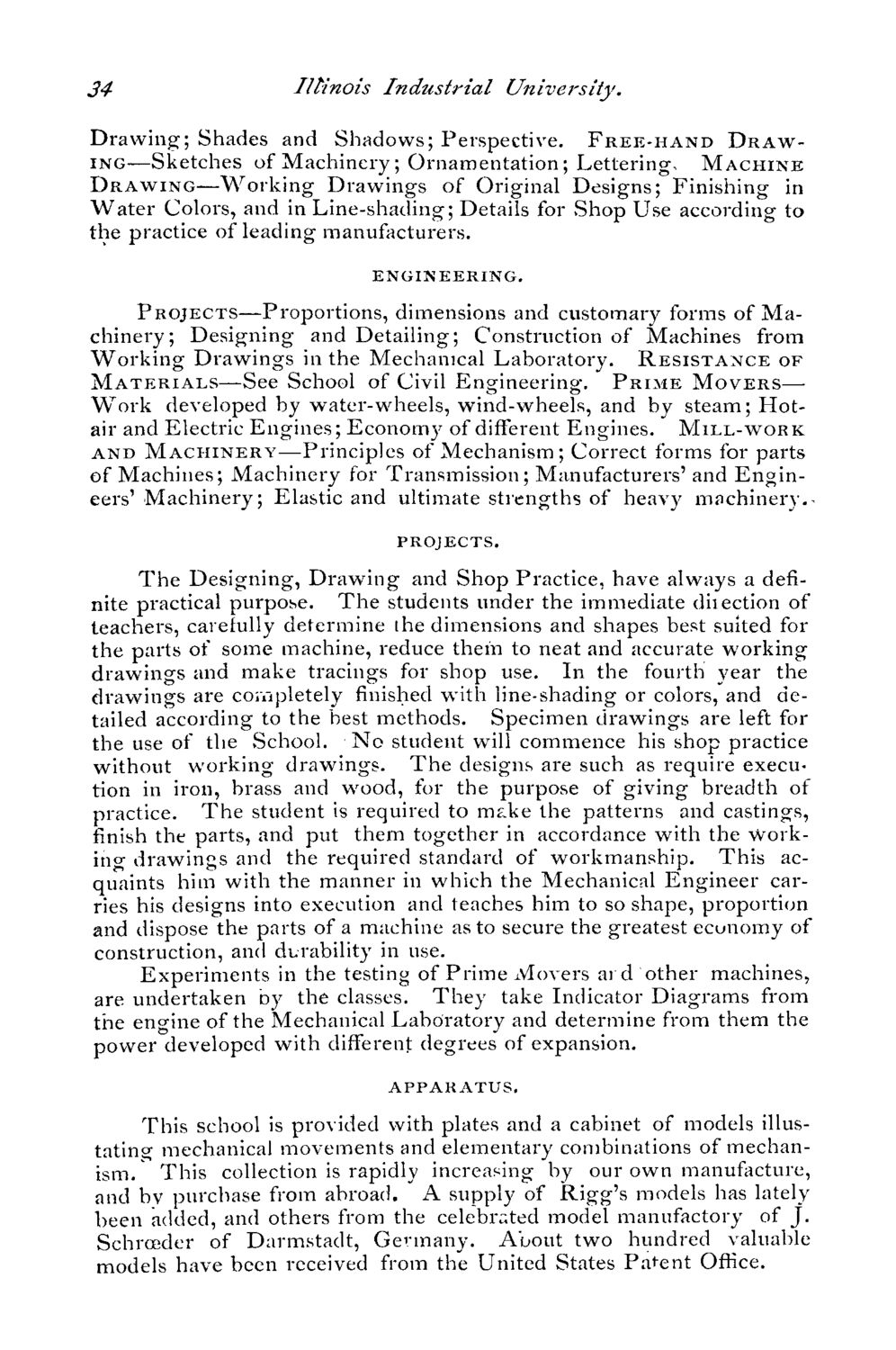Caption: Course Catalog - 1875-1876
This is a reduced-resolution page image for fast online browsing.

EXTRACTED TEXT FROM PAGE:
34 Illinois Industrial University. Drawing; Shades and Shadows; Perspective. F R E E - H A N D D R A W ING-—Sketches of Machinery; Ornamentation; Lettering, M A C H I N E DRAWING—Working Drawings of Original Designs; Finishing in Water Colors, and in Line-shading; Details for Shop Use according to the practice of leading manufacturers. ENGINEERING. PROJECTS—Proportions, dimensions and customary forms of Machinery; Designing and Detailing; Construction of Machines from Working Drawings in the Mechanical Laboratory. RESISTANCE OF MATERIALS—See School of Civil Engineering. P R I M E MOVERS— Work developed by water-wheels, wind-wheels, and by steam; Hotair and Electric Engines; Economy of different Engines. MILL-WORK AND MACHINERY—Principles of Mechanism; Correct forms for parts of Machines; Machinery for Transmission; Manufacturers' and Engineers' Machinery; Elastic and ultimate strengths of heavy machinery. PROJECTS. The Designing, Drawing and Shop Practice, have always a definite practical purpose. The students under the immediate diiection of teachers, carefully determine ihe dimensions and shapes best suited for the parts of some machine, reduce them to neat and accurate working drawings and make tracings for shop use. In the fourth year the drawings are completely finished with line-shading or colors, and detailed according to the best methods. Specimen drawings are left for the use of the School. No student will commence his shop practice without working drawings. The designs are such as require execution in iron, brass and wood, for the purpose of giving breadth of practice. The student is required to mf.ke the patterns and castings, finish the parts, and put them together in accordance with the W'orking drawings and the required standard of workmanship. This acquaints him with the manner in which the Mechanical Engineer carries his designs into execution and teaches him to so shape, proportion and dispose the parts of a machine as to secure the greatest ecunomy of construction, and durability in use. Experiments in the testing of Prime Movers aid other machines, are undertaken by the classes. They take Indicator Diagrams from the engine of the Mechanical Laboratory and determine from them the power developed with different degrees of expansion. APPARATUS. This school is provided with plates and a cabinet of models illustating mechanical movements and elementary combinations of mechanism.' This collection is rapidly increasing by our own manufacture, and by purchase from abroad. A supply of Rigg's models has lately been added, and others from the celebrated model manufactory of J. Schrceder of Darmstadt, Germany. About two hundred valuable models have been received from the United States Patent Office.
|